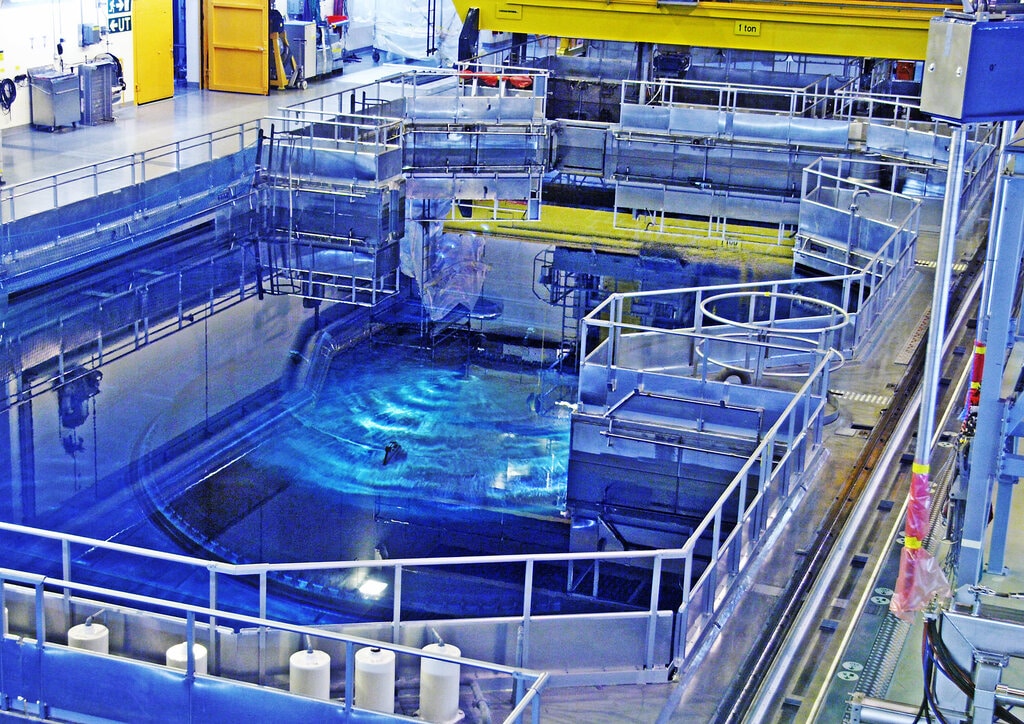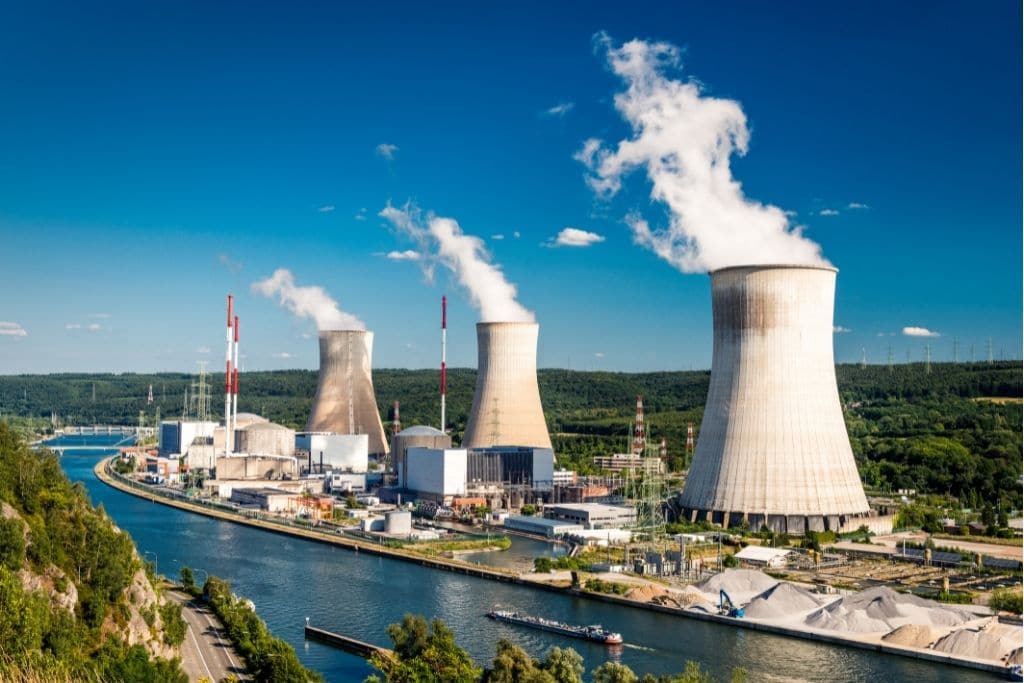Nuclear energy is an energy source that the nucleus of an atom naturally contains, which can be extracted and produce electricity by creating nuclear fission in a reactor.
—
Recently, nuclear energy has been back in the spotlight following the European Commission’s controversial decision to label investments in nuclear power plants as “green”. Today, nuclear energy provides about 10% of the world’s electricity, but opinions regarding this particular energy source are constantly changing, following the nuclear disaster in Fukushima, Japan in 2011. So, what is nuclear energy and what are the biggest arguments for or against it?
What Is Nuclear Energy?
A conventional nuclear power plant generates electricity by producing steam which is then channelled to spin turbines. The two most common methods to produce steam are boiling water or pressurised water; to boil or pressurise water, a nuclear power plant relies on the physical process called nuclear fission, during which the nucleus of an atom is split into two or more smaller nuclei. Whenever nuclear fission occurs, a small amount of energy is released and turns to heat, which eventually boils water and produces steam. This is similar to burning fossil fuels to generate heat and converting heat into energy. Currently, uranium is the most common chemical element used as fuel in nuclear power plants for nuclear fission since its atoms are easily split apart.
Nevertheless, since multiple nuclei are generated in every single fission, the number of nuclei can rapidly multiply if the process is uncontrolled. Once nuclei accumulate to a certain level, at which too much heat is left in a confined space, the reactor will eventually melt due to overheating. Hence, nuclear power plants need to constantly cool down the reactor to prevent overheating. The method to do this is to push water through a condenser to the reactor and carry the heat away.
In addition, should any technological problem unfortunately occur, like a sudden malfunction of the condenser, the last resort is to stop the operation of the reactor completely. There are things called control rods built around the reactor; they are devices made of chemical elements like cadmium, or hafnium, which are able to absorb neutrons so that it is possible to control the rate of fission by deciding how many rods to be pushed into the reactor and to stop completely the reactor’s operation if needed.
Is Nuclear Energy Bad for the Environment?
Supporters of nuclear power point out that it can be used as a tool to combat climate change. As nuclear power plants do not require the process of burning in order to generate electricity, nuclear energy does not produce direct greenhouse gases. But, it does produce indirect greenhouse gases during the construction of the plants and the mining of uranium.
Taking these factors into consideration, the Intergovernmental Panel on Climate Change (IPCC) published in 2018 says that the median carbon dioxide emissions of nuclear power plants over a life cycle is equivalent to 12 kilowatt-hours (kWh), which makes it better than solar power (48kWh) in terms of greenhouse gas emissions and as good as wind power.
On the other hand, despite its low carbon dioxide emissions, there are environmental problems specific to nuclear power, and radioactive waste from it is a glaring one. Even when the uranium used for nuclear fission is no longer generating electricity, it is still extremely hot and radioactive, which will pose a huge threat to biodiversity and humans if leaked. Depending on the type of waste, radioactive decay can take anywhere from 1,000 to 10,000 years. Geological disposal is currently considered the best option to store radioactive waste, which means that waste is stored deep underground where the geological setting is stable. At the same time, it is ensured that the waste from nuclear power plants is well packaged and protected by engineered barriers to prevent them from reaching the surface environment.

You might also like: Nuclear & the Rest: Which is the Safest Energy Source?
Is Nuclear Energy Safe?
The biggest concern regarding nuclear energy is its safeness. Despite all the exhaustive safety measures in place, including the controlled rods and machines that require manual operation, they are all susceptible to malfunction due to negligence. No matter how slight the possibility is, one nuclear accident can bring disastrous results and impacts for decades, if not a century, as seen with the disaster in Chernobyl, Russia and Fukushima in Japan. People may argue that these accidents were preventable; Chernobyl would not happen if the reactor was not poorly designed and if the employees were trained adequately while Fukushima would not happen if the nuclear power plant was not built in a place where earthquakes are known to occur. Indeed, we can learn from the mistakes that we made and prevent the same events from happening again, but some may argue that the cost is still too high.
Certainly, we clearly failed to learn from the mistakes that we made, given that nine nuclear reactors in Japan remain in operation despite increased threats of earthquakes. It is also irresponsible to claim that an accident will not happen in a “perfect” nuclear power plant as many uncertainties are involved, preventing a “perfect” circumstance, including the economic and political considerations made by politicians. Many countries that adopt nuclear energy are not for the purpose of creating a sustainable planet. For instance, the reason that about 70% of France’s energy comes from nuclear power, making it the largest consumer and producer of nuclear power in terms of percentage, is ascribed to the policy of energy security which dates back to the epoch of Charles De Gaulle, aiming to be self-sufficient in energy.
Yet, the safety concern of nuclear power may be soon resolved amid new discoveries on a relatively unknown chemical element, thorium, which is proven to be able to generate nuclear energy but carry much smaller consequences than uranium. This includes a smaller scale of radioactivity and a shorter period of radioactive decay. Experts have been trying to build a new reactor to turn thorium into energy. Instead of using water as an intermediate to generate energy, the new reactor uses salt instead. It could be much safer than conventional nuclear power plants since it will not meltdown as the boiling point of fuel salt is about 1,670 K, much higher than the temperature of the reactor during operation at 973K. If this concept can be realised and is used to replace conventional reactors, nuclear power will become much safer by preventing accidents due to human negligence.
You might also like: The Advantages and Disadvantages of Nuclear Energy


















